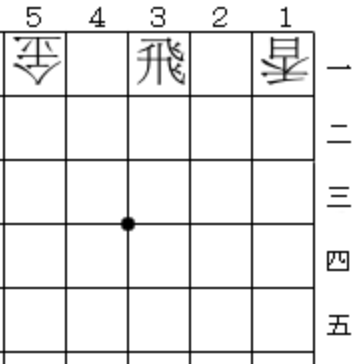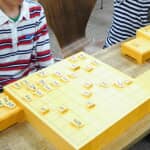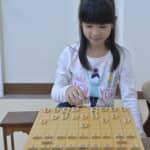2 February 2019
Things That Shogi Beginner Children Often Get Confused with: #1 Piece Value
Techniques to Play a Game
Once you understand how pieces move and several moves are prohibited, you are prepared to play a real game. You might want to learn tactics or Kakoi (castle) to get the upper hand.
There are some Shogi text books that introduce those tactics and castles after the explanations of Shogi basic rules, since tactics and castles can be just memorized as knowledge.
Especially, beginner children love castles and tend to memorize some castles first. However, if they memorize castles at their level, both players are likely to devote themselves into only building the same castle, such as a popular “Anaguma” castle, as this/her opponent, which will make the game difficult to be finished.
The real aim of Shogi game is to capture the opponent’s Gyoku. If building castle gives children a feeling of accomplishment, they can’t get the real goal.
Therefore, I recommend learning techniques to play a game first (using pieces effectively), before learning tactics or castles.
Piece Value
Let’s start today’s main topic. There are several techniques to play a Shogi game, using pieces effectively. Among them, the first goal is to understand a value of each piece. “Value” means the order of pieces from the most valuable piece to the least valuable one. To memorize this order, you can practice capturing more valuable pieces.
To encourage children, I show and place each piece with following explanations:
Gyoku: This is the most important piece. Losing this piece means you lose a game.
Hisha: This is a key piece to attack, since it moves a lot.
Kaku: This is a little bit less valuable than Hisha. Yet, this is also a major piece.
Kin: This is a very handy piece, it works well both in a defensive situation and an offensive situation to capture a piece.
Gin: This is at not the same, but a little bit lower level of Kin. This also can work in both defense and offense situations.
Kei: This is an only piece which can hop.
Kyo: There isn’t a big clear difference between Kei and Kyo, but this is set at this level.
Fu: This is the least valuable one, as this can move only one square at a time.
If the aim is just to memorize the piece value order, the following simple picture would help children understand it.
Capture a Higher Valued Piece
Once you learned the order of piece-value, next try to practice capturing a piece with a higher value.
The below example is what I had in my Shogi class.
Example
A student made a mistake in exchanging pieces.
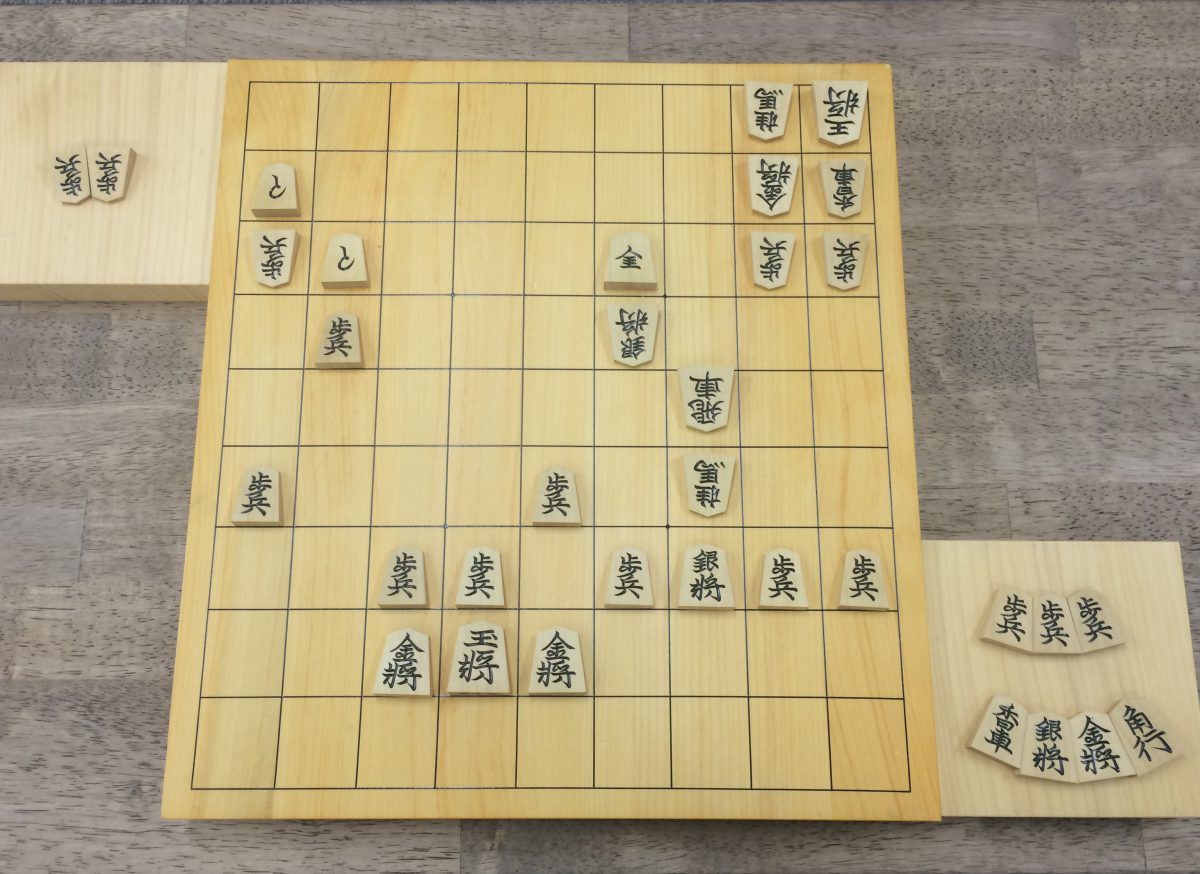
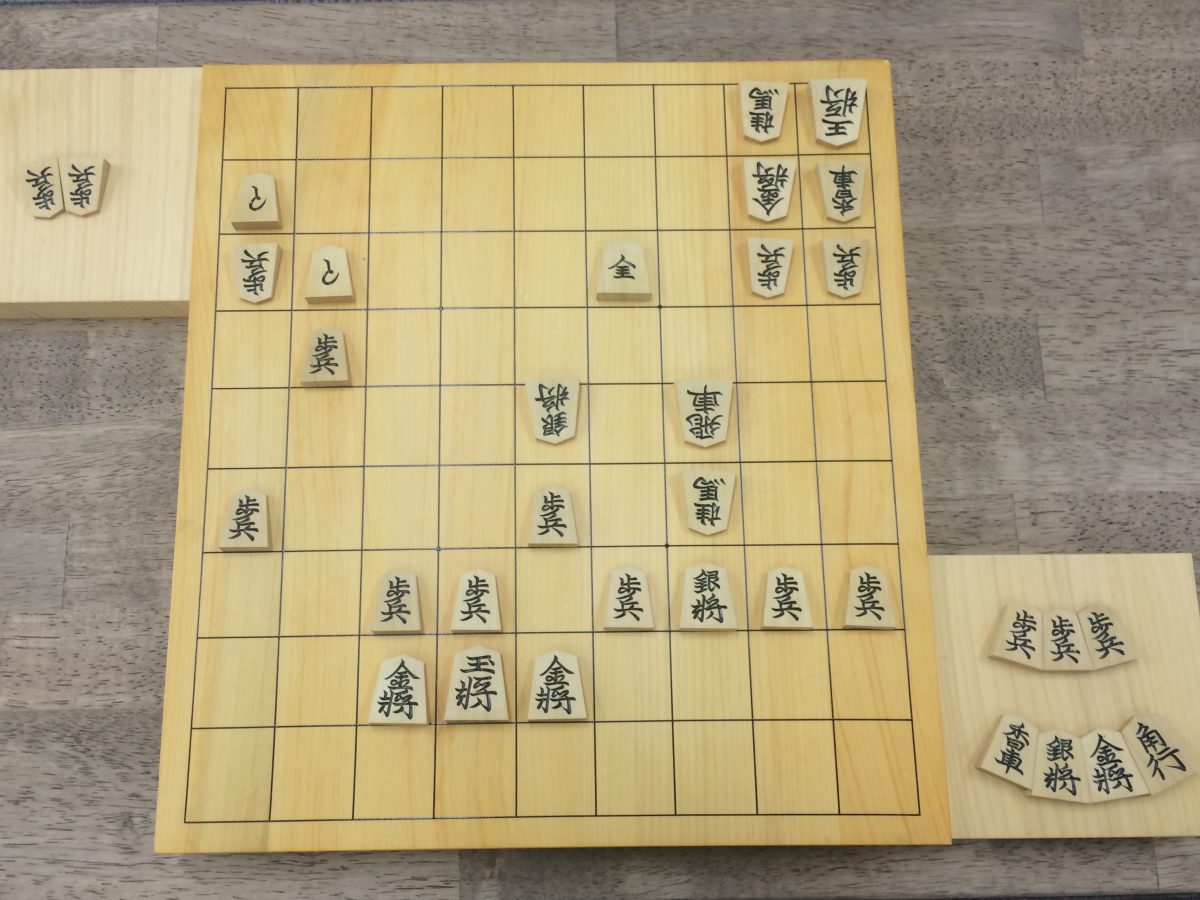
The above pictures show situations that I had during my class with a 5-year-girl. We played a game without my six pieces as a handicap. She should have moved Gin to 4e instead of 5e.
I asked her why she moved it to 5e. She said, “Well, even though my Gin is captured with Fu, I can take the Fu back with my Hisha”. She is right, you can take Fu back with Hisha.
Now, think carefully. The girl will get Fu, on the other hand I will get Gin. This exchange isn’t valuable for her. “I got Gin, and you got Fu. Which piece is more valuable?”, I asked. She answered clearly, “Gin!” It seemed that she understood what piece values were, but it was difficult for her to apply the knowledge to the real situation. This often happens to Shogi beginner children.
This student just started Shogi lessons last month, so I admired and praised her decision to let Gin get away from the situation.
Importance to Understand Meanings behind Each Technique
Techniques, such as piece values, or capturing the piece with a higher value, can be applied in any real situation, meanwhile just having knowledge isn’t strong enough to be applied. In each Shogi situation, you may have 80 possible moves. Shogi beginners rarely encounter exactly the same situation.
So, just memorizing tactics or castles as your knowledge won’t help you strongly. Techniques you learned should be used more widely.
The other day, I tried to explain one of standard move sequences to one adult student. Each time I told him a move, he said, “What if the opponent player won’t move like this?” It was really hard to go on.
You can’t apply standard move sequences to real situations, unless you completely understand the meaning of each move.
Surely, accumulating your knowledge is also important, but it’s not the only thing you should focus on. In real game situations, no one can tell what will be the next move. So, merely memorizing whole moves of tactics and castles as just they are, you will find it difficult to use them in a game. Instead, I would recommend understanding the reason why effective moves work well.
Taking the example of cooking, when you start to learn how to cook, you may learn techniques first, such as “cutting”, “frying”, or “boiling”. If you learn how to boil eggs in a cooking class, then you just keep boiling only eggs. It doesn’t seem worthwhile that you went to a cooking class. Once getting the technique to boil things, you may boil vegetables or other ingredients. You will be able to have variations in your cooking.
The same can be said in Shogi.
